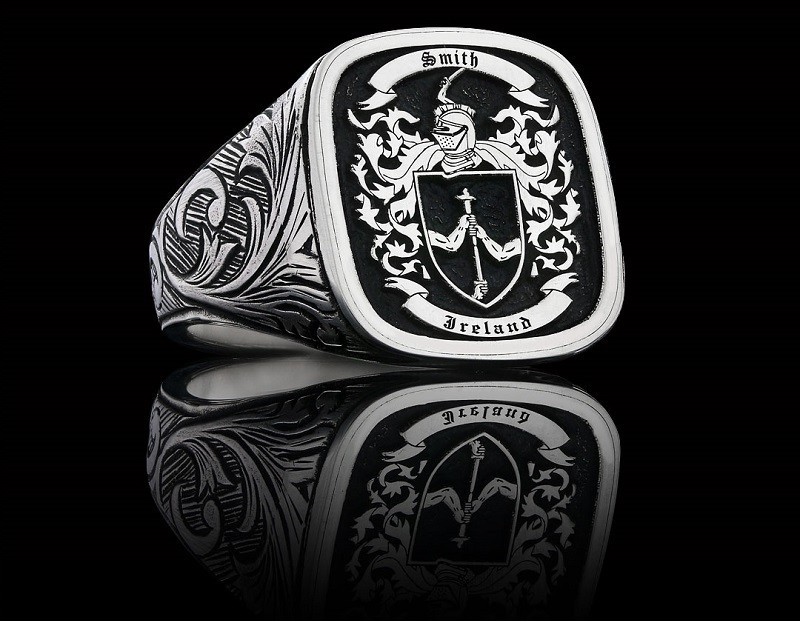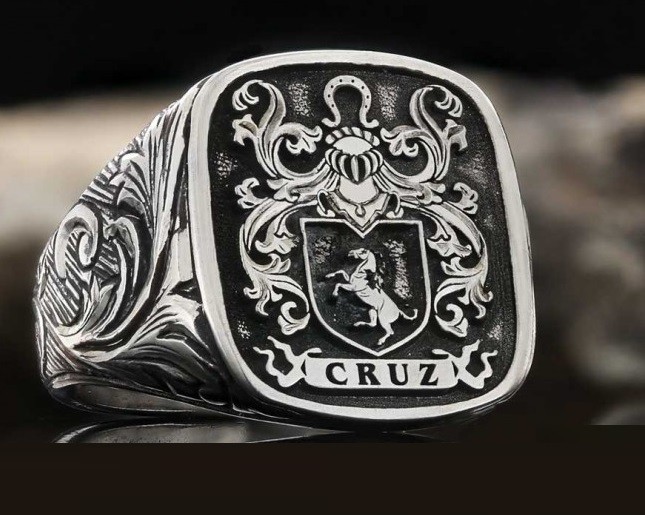Smith Coat of Arms and Family Crest is fascinating as it dates back to 1273. It ranks as the 5th most common name in Ireland. It is also very common in England and Scotland. Because of immigration, it is now very popular in Australia, Africa, Canada and the United States of America. The name was assumed as the surname of the MacGowan families which can be found around the counties of Cavan and Meath. It is now acknowledged that Ireland was one of the earliest countries to evolve a system of hereditary surnames. The spelling of the name can be Smyth and this is favoured by many Irish families.

Family Crest Rings & Smith Coat of Arms
The Coat of Arms can be embroidered or printed on plaques. One of the most common ways to display the Coat of Arms is to have it engraved on Family Crest Rings. It is also worth noting that it was an occupational name associated with working with metal. The medieval Smith Families worked as smiths, making horseshoes and other domestic implements and forging excellent swords and other armour.

History
In England, the name is very common in East Anglia and appears in the records as far back as the 12th century. Johaness Tagge Smyth was listed in the Poll Tax of Yorkshire in 1379. An eminent member of the clan was Henery John Smith born in 1826 and died in 1883. This man was an Irish mathematician, born in Dublin. He was educated in Oxford at the Balliol College where he was elected a fellow. In 1860 he became a professor of geometry and was the authority of the day on numbers.
Many of the families migrated from Scotland to Ireland in the 17th and 18th centuries and were given the lands of the native Irish Catholics. Many Irish families left Ireland by ship to seek a better life in the new world of Canada and America. Because of the overcrowding on ships, a lot didn’t make it and had to be buried at sea.

